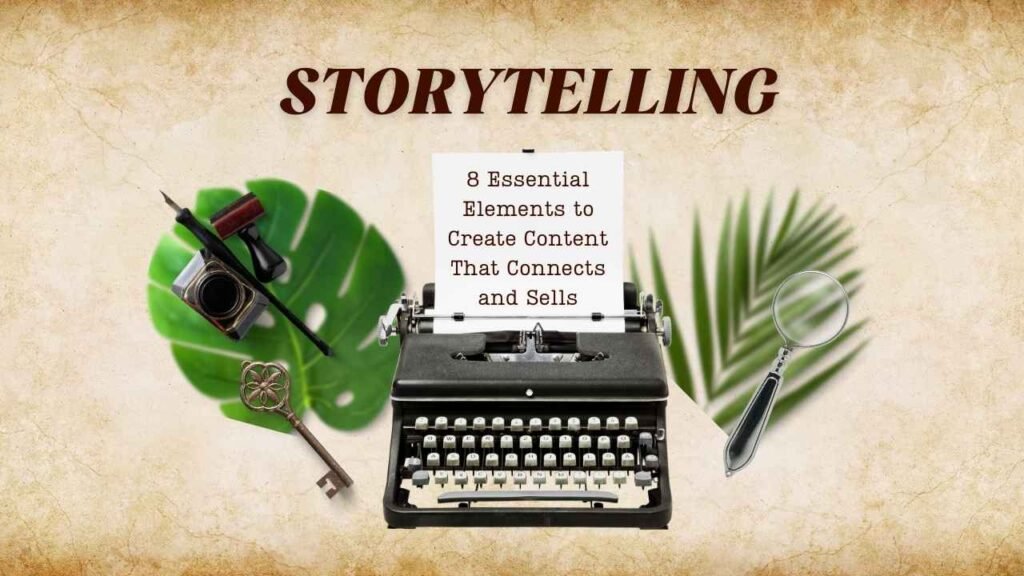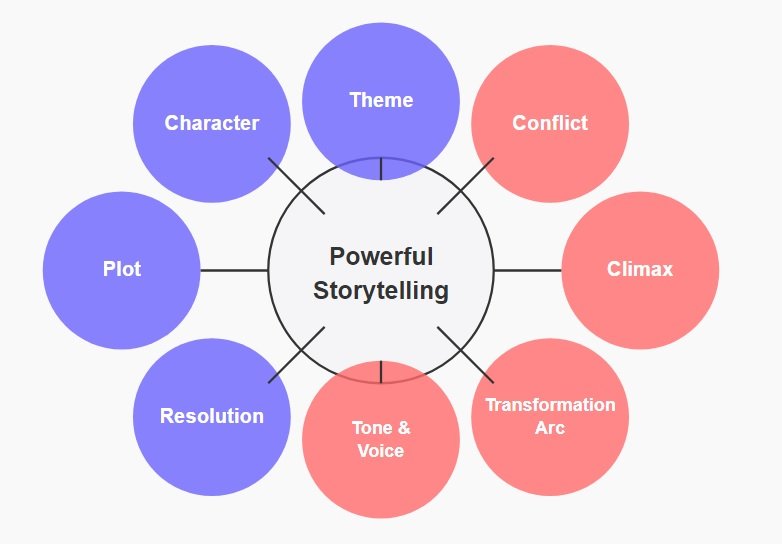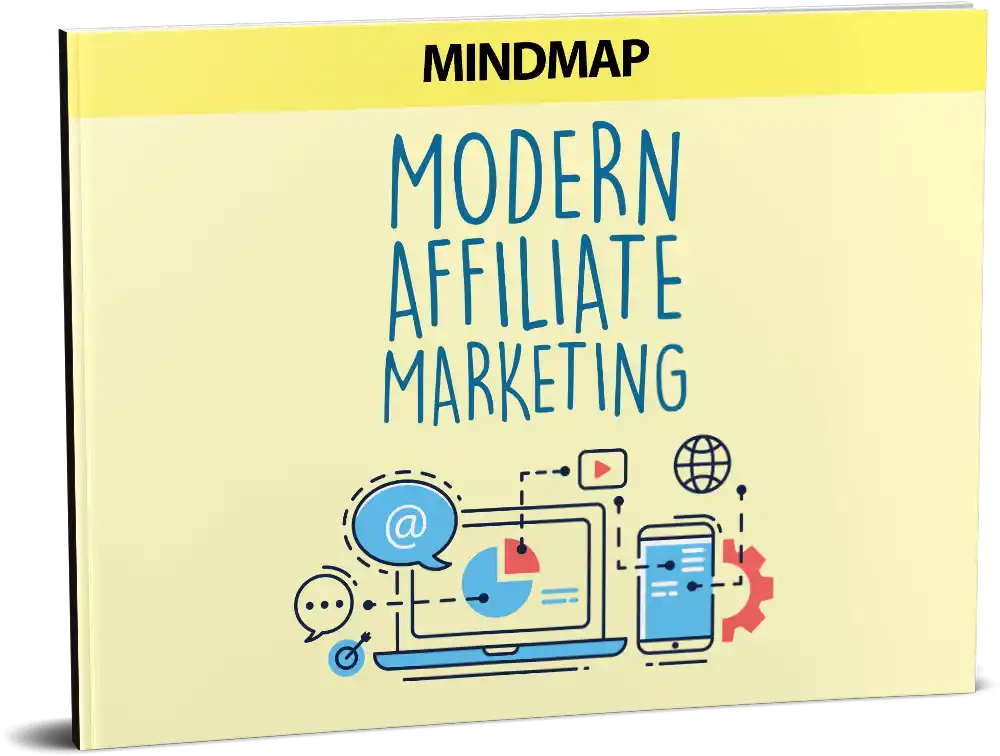
Have you ever wondered why some people can hold an audience’s attention for hours, while others can barely maintain interest for a few minutes? The answer lies in storytelling – the art of telling stories that resonate, move, and connect.
If you want to elevate your content marketing, increase your social media engagement, or transform how you communicate with your audience, this article will show you the way. We’ll explore the 8 fundamental elements of storytelling that make all the difference between being just another content creator or becoming an unforgettable reference for your audience.
Why is storytelling so powerful for your business?
Before diving into the elements, we need to understand why storytelling is so effective. Our brains are wired for stories – from cave paintings to Hollywood blockbusters, we’re beings who process and retain information through narratives.
When you master storytelling, you can:
- Create emotional connections with your audience
- Make your content memorable and shareable
- Transform complex concepts into clear messages
- Differentiate your brand in a saturated market
- Significantly increase your conversion rates
Now, let’s look at the elements that must be present in your stories!

1. Character: The heart of your narrative
Every story needs a protagonist. It could be you, your brand, or a customer – it doesn’t matter who, as long as they’re authentic and well-defined. Without a strong character, the audience has no one to connect with.
To create a captivating character, ask yourself:
- Who is the protagonist of this story?
- What is their main motivation?
- What do they want to achieve?
- What characteristics make them unique?
Remember: people connect with people, not companies or products. Humanize your communication through real and authentic characters.
2. Conflict: The tension that captures attention
A story without conflict is like a movie where everything goes right from beginning to end – boring and forgettable. Conflict generates emotion, curiosity, and keeps your audience engaged.
Think about the great marketing cases you know. All of them present some type of obstacle, difficulty, or challenge to overcome. It’s through conflict that the character (whether a brand or person) grows and transforms.
Don’t be afraid to show vulnerabilities and challenges in your communication. If you don’t create moments of tension, your audience will have no reason to keep following.
3. Plot: The journey that guides your audience
The plot is the sequence of events in your story. A good plot has a well-defined beginning, middle, and end, guiding the audience through a clear and coherent journey.
To build an engaging plot:
- Start with an initial situation that captures attention
- Gradually develop tension through conflict
- Maintain coherence between the narrated events
- Ensure that each part of the story has a purpose
Great brands don’t just sell products; they sell engaging stories where the consumer can see themselves as part of the plot.
4. Climax: The decisive moment that transforms
The climax is the high point of your story, where tension reaches its peak. It’s the decisive moment, the “plot twist” that surprises and moves.
A story without a climax is like a rocket that never takes off – it consumes fuel, makes noise, but goes nowhere. To create an impactful climax:
- Build expectation gradually
- Create a moment of true transformation
- Surprise your audience with something unexpected
- Generate a strong emotional response
Remember: the climax is where the magic happens, where your audience will be completely immersed in your narrative.
5. Resolution: The closure that satisfies
After the climax, your story needs a resolution. This is the moment to show how conflicts were overcome and what changed after facing them.
An effective resolution:
- Brings closure to the presented conflicts
- Clearly shows the transformation that occurred
- Leaves a feeling of satisfaction with the audience
- Connects the narrated journey with the main message
Without an adequate resolution, your audience is left with a feeling of incompleteness, damaging the impact and memorability of your message.
6. Transformation Arc: The change that inspires
The transformation arc shows how the character changed from the beginning to the end of the story. It’s the comparison of “before” and “after” that greatly impacts the audience.
We all love stories of overcoming and transformation – they inspire us to believe that we can also change. By showing a clear transformation arc:
- You prove that your solution really works
- You inspire your audience to seek their own transformation
- You create a powerful aspirational narrative
- You demonstrate the real value of what you offer
Don’t be afraid to share your own transformation! Many entrepreneurs hesitate to show their difficult moments, but these stories are precisely what create the deepest connections.
7. Theme: The deeper meaning of your message
The theme is the central idea of your narrative – what connects all elements and gives meaning to the story. It’s the “why” behind what you do and communicate.
Strong themes can be:
- Overcoming personal limitations
- Searching for authenticity and purpose
- Transformation through knowledge
- Financial freedom and personal fulfillment
A well-defined theme makes your communication cohesive and memorable, while helping your audience identify with your deepest values.
8. Tone and Voice: The unique identity of your communication
Finally, tone and voice represent how you tell your story. It’s your communicative fingerprint, what makes your content recognizable even without your signature.
The tone can be inspiring, motivational, challenging, humorous, or a unique combination that reflects your personality and that of your brand. The important thing is that it is:
- Consistent across all channels
- Authentic and aligned with your values
- Appropriate for your target audience
- Recognizable and differentiated
Transform your communication today with storytelling
Don’t fall into the trap of thinking that storytelling is only for big brands or established influencers. We all have valuable stories to tell – experiences, challenges, failures, and victories that can inspire and connect.
The truth is that you have two options: learn to tell stories that people want to hear or be ignored in an increasingly noisy and competitive world.
Storytelling isn’t just for your content marketing – it should be present in everything you communicate, from your social media to the resume you send for a job, from an email to a client to how you present yourself in a meeting.
Want to transform your communication and create genuine connections with your audience?
Incorporate these 8 essential elements of storytelling into everything you do. Practice telling your personal stories, be vulnerable about your challenges, and celebrate your transformations.
The result? An engaged audience, more connected customers, and a business that stands out for its authenticity and ability to inspire.
Combine the Power of Storytelling with Affiliate Marketing
If you’ve made it this far, you already understand how storytelling can transform your communication. Now, imagine combining these powerful techniques with advanced affiliate marketing strategies!
That’s why we created the ebook “Modern Affiliate Marketing Strategies” – a complete guide that reveals how to use storytelling to boost your commissions and create an irresistible online presence.
It’s About Time For You To Unleash the Power of Modern Affiliate Marketing!
CLICK HERE TO DOWNLOAD YOUR EBOOK AND TRANSFORM YOUR AFFILIATE MARKETING →
Stop wasting time with outdated techniques that don’t generate results. Master storytelling, apply modern affiliate strategies, and start building a sustainable online income today!



